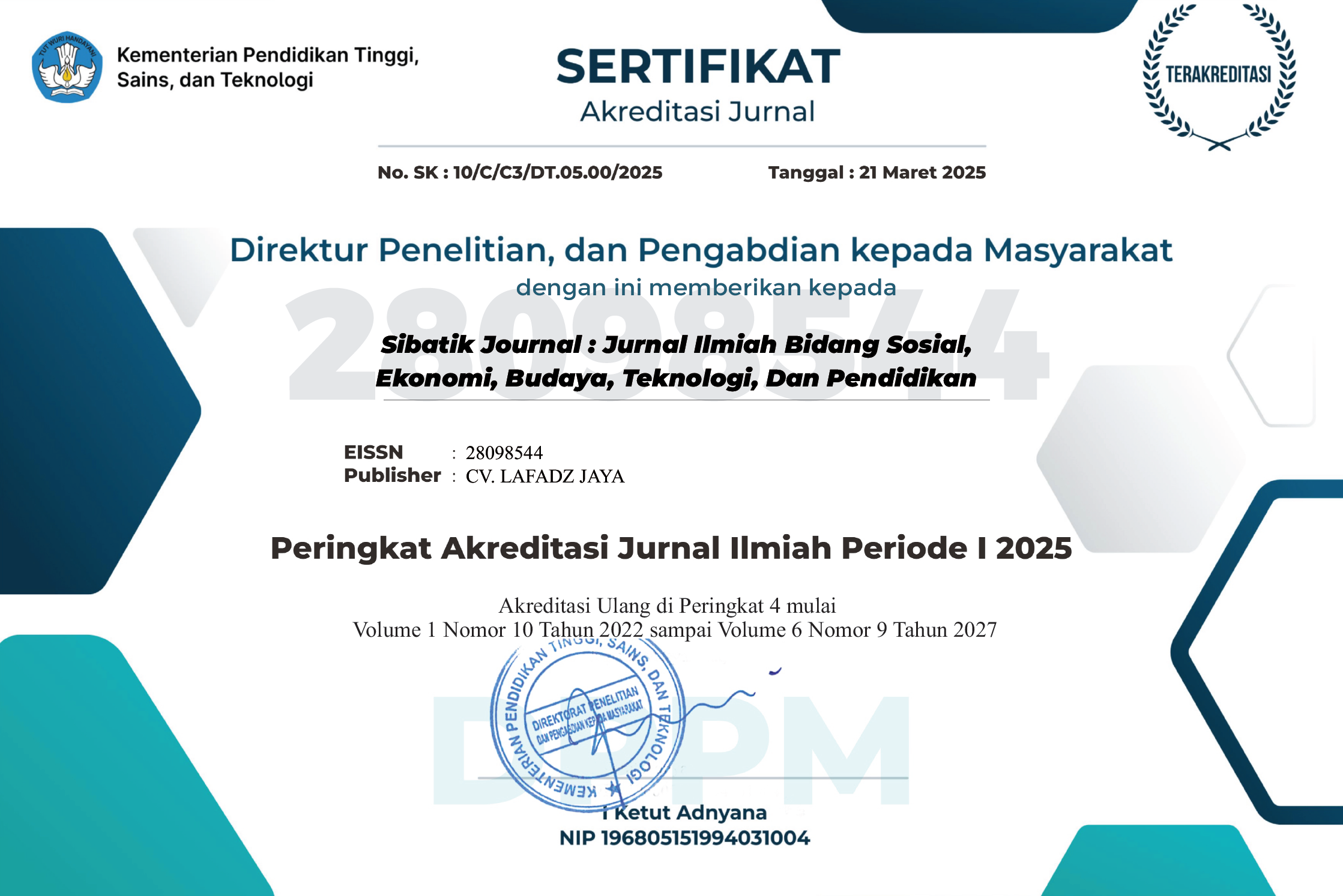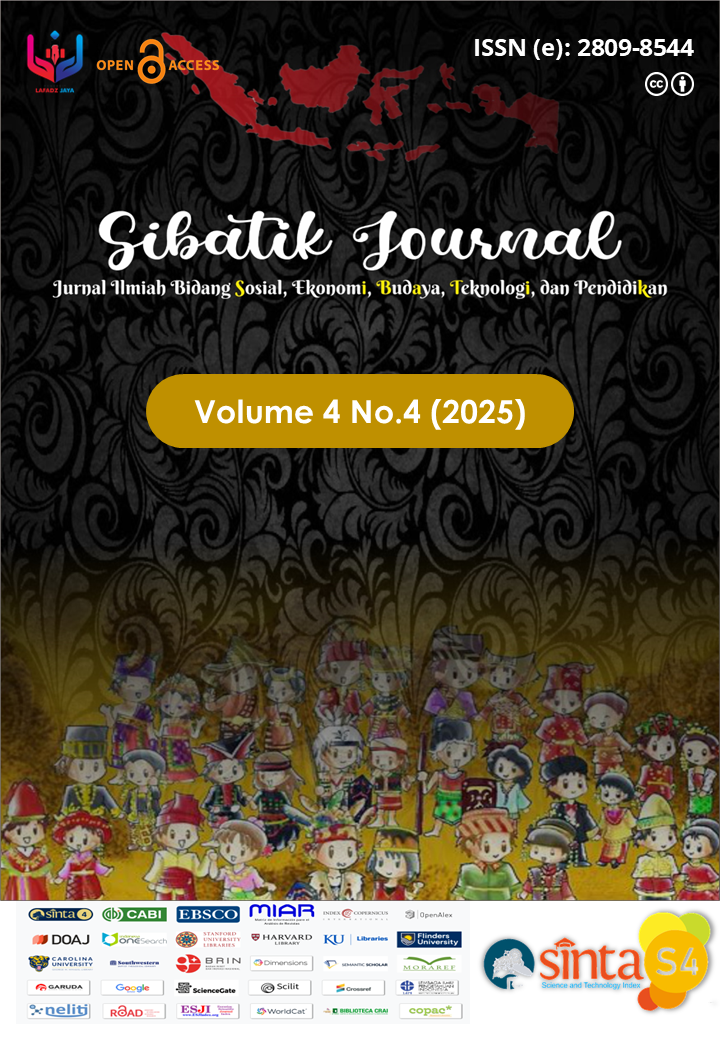TOURISM AREA LIFE CYCLE (TALC) SEBAGAI STRATEGI PENGEMBANGAN DESA WISATA BERKELANJUTAN DI KABUPATEN BADUNG-BALI
Main Article Content
I Made Darsana
Ayu Suwita Yanti
Ni Wayan Rena Mariani
Village-based tourism has become a sustainable development strategy that contributes to the well-being of local communities through the optimization of natural and cultural potential. Tourist villages in Bali, particularly in Badung Regency, possess significant potential to be developed as attractive tourism destinations due to their cultural characteristics and natural beauty. However, without proper planning, uncontrolled tourism growth may lead to risks such as over-tourism, environmental degradation, and economic imbalance. This study employs the Tourism Area Life Cycle (TALC) approach as an analytical framework for planning the development of tourist villages in Badung, Bali. TALC allows for the identification of the stages of tourism destination development, enabling the implementation of tailored strategies to promote sustainable growth. This study adopts a descriptive qualitative method, utilizing data collection techniques such as in-depth interviews, observations, and literature reviews. The findings indicate that tourist villages in Badung are currently in the involvement stage, where local communities are beginning to actively develop basic tourism facilities but still face various challenges related to sustainability. To prevent stagnation or decline, sustainability-based strategies are necessary, including the implementation of green business practices, strict environmental regulations, and the diversification of tourism products that actively involve local community participation.
Asmawaty, A. (2021). Beach tourism destinations promotion strategy tthrough social media influencers in Bulukumba Regency. International Journal Papier Public Review, 2(4), 56-69.
Bian, M., Murdana, I. M., & Kurniansah, R. (2022). Strategi Pengembangan Pantai Pink Sebagai Atraksi Pariwisata Di Labuan Bajo Kabupaten Manggarai Barat. Journal Of Responsible Tourism, 1(3), 281-290.
Buhalis, D., & Costa, C. (2006). Tourism management dynamics: Trends, management, and tools. Elsevier.
Butler, R. W. (1980). The concept of a tourism area cycle of evolution: Implications for management of resources. The Canadian Geographer, 24(1), 5-12. x
Fiqriyah, K., Kadiyono, A. L., & Hinduan, Z. R. (2024). Employee Welfare Review through Environmentally Friendly Behavior. Psikoborneo: Jurnal Ilmiah Psikologi, 12(2), 187-195.
Harlan, J., Doe, R., & Smith, A. (2022). Sustainable tourism development and the TALC model: A case study of nature-based destinations. Journal of Tourism Studies, 35(2), 120-135.
Lee, C., Kim, H., & Park, J. (2020). Extending the life cycle of tourist destinations: The role of sustainable tourism policies. International Journal of Tourism Research, 22(4), 567-582.
Lestari, N. P. N. E., I. Nyoman Rasmen Adi, Ni Nyoman Reni Suasih, and Alit Sumantri. "Mapping the potential and the development of Kendran as a tourism village model in Bali." Jurnal Bali Membangun Bali 1, no. 3 (2020): 193-220.
Muzdalifa, M., & Afifudin, A. (2023). Sport tourism as a catalyst for economic development in Sembalun Lawang Village, East Lombok. Jurnal Pariwisata Nusantara (JUWITA), 2(1), 52-59.
Nurmayani, N., Deviani, E., Mahdewi, R., & Banjarani, D. R. (2021). The Application of The Sustainable Development Concept In Indonesia’ s Environmental Law. Musamus Law Review, 4(1), 41-50.
Page, S. J. (2019). Transport and Tourism: Global Perspectives (3rd ed.). Pearson.
Pickel-Chevalier, S., & Ketut, B. (2016). Towards sustainable tourism in Bali. A Western paradigm in the face of Balinese cultural uniqueness. Mondes du tourisme, (Hors-série).
Purwaningsih, R., Annisa, H. N., Susanty, A., & Puspitaningrum, D. D. (2020, April). Assessment of tourism destination sustainability status using rap-tourism case of natural based tourism. In AIP Conference Proceedings (Vol. 2217, No. 1). AIP Publishing.
Purwaningsih, R., Ameliafidhoh, Z., Susanty, A., Pramono, S. N. W., & Agusti, F. (2021). Sustainability status assessment of the Borobudur temple using the Rap-Tourism with Multi-Dimensional Scaling (MDS) approach. In E3S Web of Conferences (Vol. 317, p. 05004). EDP Sciences.
Putra, R. E., Yuwono, S. B., Herwanti, S., & Wulandari, C. (2023). Karakteristik pengunjung pada wisata alam air terjun Batu Putu Kota Bandar Lampung. Jurnal Belantara, 6(1), 1-11
Rachmad, Y. E., Hidayat, T., Darmayasa, D., Bakty, A. F. M. A., Mulya, R. A. S., Nurjannah, N., ... & Rumawak, I. (2024). Buku Ajar Kebijakan & Manajemen Pariwisata. PT. Sonpedia Publishing Indonesia.
Rosardi, R. G. (2021). Potensi pariwisata berkelanjutan berbasis edutourism di Indonesia. RISTEK: Jurnal Riset, Inovasi dan Teknologi Kabupaten Batang, 6(1), 12-20.
Situmeang, I. V. O. (2020). Strategi Komunikasi Pariwisata: Menciptakan Seminyak Menjadi Top of Mind Tujuan Wisata Di Bali. Scriptura, 10(1), 43-52.
Smith, B., & Jones, K. (2021). Innovation and renewal in mature tourist destinations: A TALC perspective. Annals of Tourism Research, 48(3), 210-225.
Tambunan, R. E., Nugroho, R. A., Dewanti, A. N., & Putra, R. S. (2024). Konsep Pengembangan Destinasi Pariwisata Terpadu Pada Objek Wisata Pulau Kumala, Kabupaten Kutai Kartanegara. COMPACT: Spatial Development Journal, 3(1).
Warman, B. P., Zulvianti, N., & Putri, H. M. (2024). Pengaruh Motivasi Wisatawan, Daya Tarik Wisata Dan Citra Destinasi Terhadap Minat Berkunjung Wisatawan Ke Wisata Religi Makam Syekh Burhanuddin. Transekonomika: Akuntansi, Bisnis Dan Keuangan, 4(3), 285-302
Yudhistira, A., & Gde, P. (2021). Taro Tourism Village Development Strategy as an Eco-Spiritual Destination, in Gianyar Regency-Bali. Journal of Business on Hospitality and Tourism, 7(1), 90-102.

























